You’ve decided you’re ready for a dog. You’ve wanted one for years, but you finally feel like you’re in the right life circumstances to get one. So you contact your local adoption center, or a local breeder that a friend’s trainer recommends – and what happens? The rescue asks for a 15-page application, and denies you anyway; or the breeder has a two-year waitlist, and won’t even add you without an interview. What’s going on – and what should you do?
Good rescues and breeders don’t just take anyone
First things first: do NOT just go to the first adoption center or breeder that will give you a dog as quickly as possible and with minimal requirements. Good rescues and breeders care, first and foremost, about good outcomes for their puppies. They prioritize the dog’s welfare, which starts with ensuring they are going to the right home. If the application process is difficult, that is because they want to make sure that you will be a responsible guardian for the dog – meeting their needs for physical, mental, and social stimulation – and that your lifestyle and living situation are appropriate for the dog you are trying to get.
Why should you want to work with those more ‘difficult’ adoption centers and breeders? Because they are the ones that will ensure you are getting a healthy dog that is set up for success. Responsible, ethical adoption centers, rescues, and breeders who take the time vet you also take the time to raise and care for their dogs in a way that is both better for the dogs and will make life easier for you, the future owner.
On top of that, these hurdles not only protect the dog – they also protect you. Their checks help ensure that you aren’t unknowingly getting yourself into a situation you can’t handle!
How to show rescues and breeders that you will be a responsible owner
Good adoption centers, rescues, and breeders want to make sure their puppies are going to a home where they will thrive; if you want a dog from them, you need to show them that you know what you’re getting into, and that you are ready for it.
What can you do to show them you are ready? Here are some tips:
- Study up: read a few introductory resources, such as the RCO Primer, Karen Pryor’s don’t shoot the dog, or Ian Dunbar’s Before & After Getting Your Puppy. That will both (a) give you a sense for what to expect from dog ownership, and (b) start you off with some initial concepts to build on as you learn how to appropriately handle, raise, train, and care for a puppy or adult dog.
- Take the RCOC: if you want to show them you’re committed and are taking the time to learn, take the RCOC. That will both (a) show them that you’re willing to put in the time and effort to be a responsible owner, and (b) you’ve got some initial familiarity with what you will need to learn – you’re not going into this totally blind.
- Get familiar with the breed(s): if you’re looking at a particular breed or mix, familiarize yourself with the typical behaviors and needs of the breed. Are they often a high-drive or high-energy breed, requiring more physical and mental stimulation than average? Do they have a strong guard instinct, requiring particularly careful socialization? What are their grooming and maintenance requirements? If you’re having a hard time finding reliable information, just ask the rescue or breeder you’re working with! They’ll be glad to see that you care and are investing in learning.
- Connect with a class or trainer: EVERY new dog owner must, at bare minimum, take at least one 6-12 week basic obedience course, and ideally should be taking classes and/or working with a professional trainer for their first year with their dog – if not indefinitely. That will yield enormous benefits to for both you and your dog. Identify the class or trainer you intend to take/work with ahead of time, and tell the adoption center or rescue about your plans, showing them that you will take this seriously and work to educate yourself. You can also ask the adoption center/breeder: many also run training programs, or maintain a list of trainers they regularly partner with.
- Lay out your plans for physical, mental, and social stimulation: show the rescue or breeder that you understand your potential dog’s needs, and have made whatever necessary accommodations in your lifestyle to meet them. For physical needs, how often will you take them for walks, hikes, or fetch? How will you make sure they’re getting not just enough total activity, but ‘high-intensity’ activity? For training and mental stimulation, will you make time for a bit of training each day? How will you create opportunities for mental challenge and occupational therapy? For social needs, how often and how long will you leave your dog alone? How will you do separation anxiety training?
If you do all of that, you will not only be better-prepared to have an easier, more comfortable, more positive experience with your new dog, you will also be able to give your rescue or breeder more confidence that you are going into dog ownership with eyes wide open and a willingness to put in the effort needed to create a safe, joyful, enriching life for both you and your dog!




